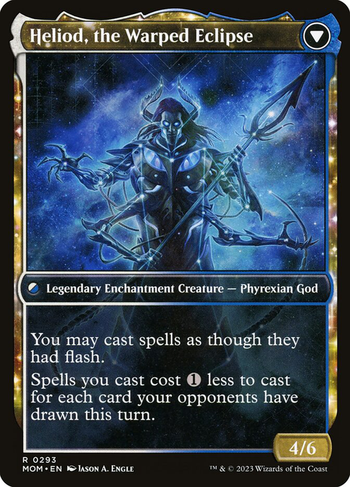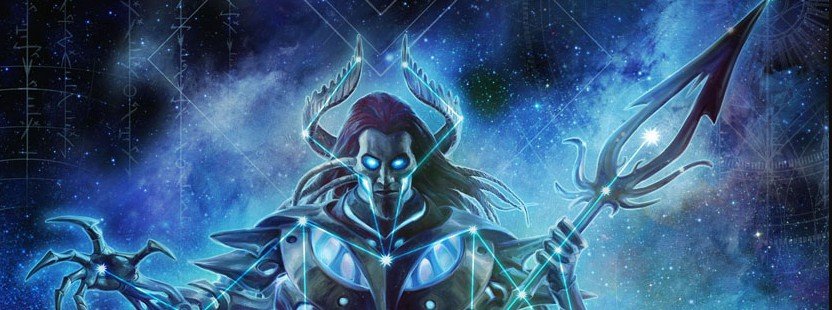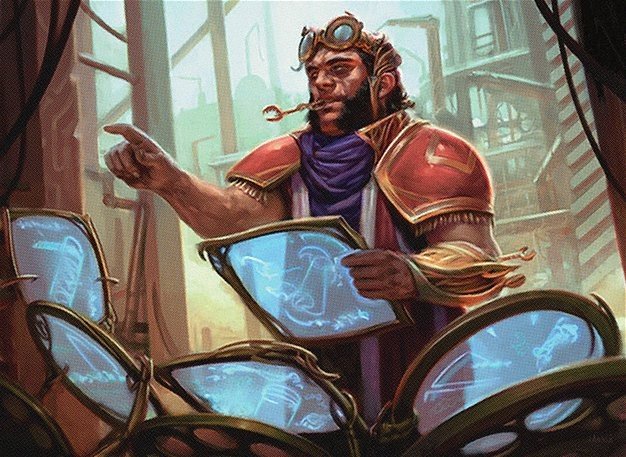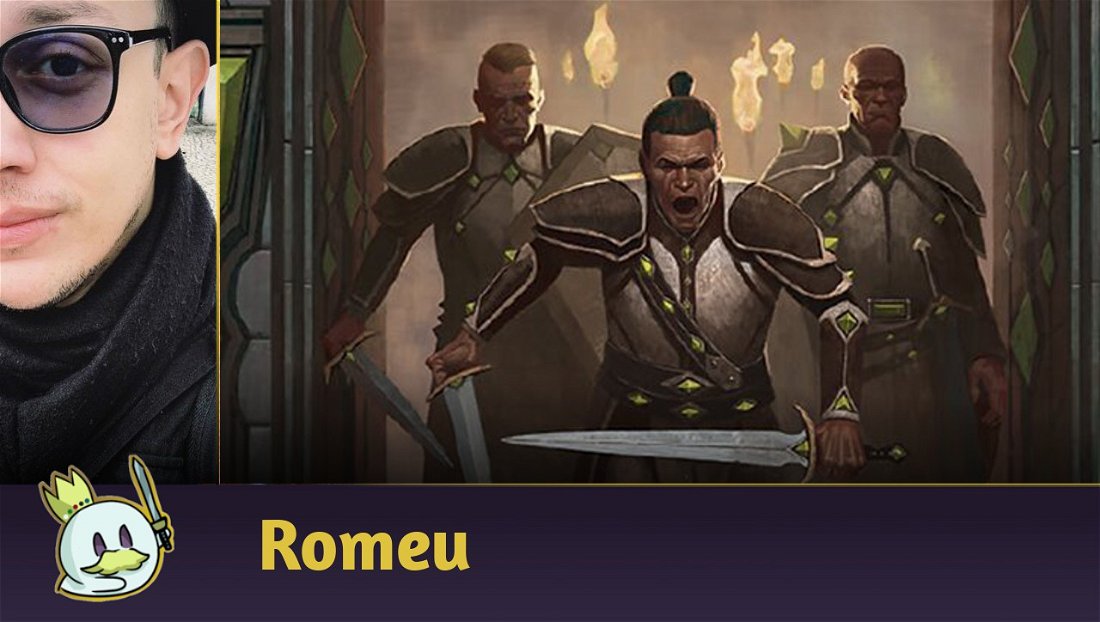Introduction
When we come to new sets we always look and want to bring the highest number of decks that are supported by new cards, both for articles like this one and for our game tables, to always experiment and disseminate news. Thus, we always go after two types of deck; the most powerful ones that are capable of centralizing games around themselves and the most different, unusual ones that will draw intriguing glances from your colleagues.
In March of the Machine, we have Heliod, the Radiant Dawn, more precisely its transformed side Heliod, the Warped Eclipse, which has a very interesting ability.
The Commander - Heliod, the Radiant Dawn

The front of the card, Heliod, the Radiant Dawn, is pretty simple. A four-mana legendary enchantment creature that can recover a non-god-type enchantment from the graveyard to your hand, which makes a tribal of that type a bit unfeasible.
Unlike the last gods of Theros, like Heliod, Sun-Crowned, this little guy indestructible or requires devotion to transform from an enchantment with static effects into a creature. But what draws attention is his last ability, which allows him to transform.

After transforming, we have Heliod, the Warped Eclipse, which is where this deck gets interesting. The legend not only gains another pair of arms, but also gains the color blue and two very interesting abilities.
The first is to allow your spells to be played as if they had flash, allowing creatures, artifacts, enchantments and spells to be able to get much more out of their abilities and exploit their potential to the fullest.
Its second is the ability to reduce the generic mana cost of your cards for every card your opponents drew this turn, regardless of whether the draw came from sources you control or they control. This allows you later in the game to cast cards like Ulamog, the Ceaseless Hunger and a huge Walking Ballista in the middle of an opponent's turn and without spending any mana.
Heliod, the Warped Eclipse will then be a commander who does a lot of heavy stuff towards the end of the game, but for that, we have to build a very synergistic deck.
The Decklist
The simplest way to get great value with draws is to build the deck in a strategy known as Wheels. The name of this strategy comes from the card Wheel of Fortune, which discarded each player's hand and made them draw 7 cards. If we stop to think about it, with three opponents drawing seven cards in one turn, then we have the generic 21 mana reduction in the cost of our spells.
It's important to be clear: a card draw by an opponent will lower the generic cost of all your cards. It's a cost reduction and not an ability that generates mana. Thus, if you have several cards in your hand, you have the cost of all of them reduced.
Finally, it is worth remembering that lowering the cost does help to cast X cost spells cheaper. Therefore, spells like Sphinx's Revelation and Secure the Wastes become much stronger, being able to be cast with a high X value and with very little effort.
Here is the deck we will be using:
Unfortunately, some pieces of this deck are expensive, but you can still mitigate the prices a lot! We have a budget version at the end of the article.
The Strategy

As we said, we'll use effects that resemble the Wheel of Fortune card. Even though this one is red, we can find many similar effects in blue, such as Windfall.
Day's Undoing has an interesting function, as it provides the possibility of being cast on the opponent's turn, giving its caster the demerit that casting it on their turn ends the turn. Day's Undoing was practically made to be played alongside Heliod, the Warped Eclipse.
Teferi's Puzzle Box allows your opponents to always spin their entire hand at the start of their own turns, allowing for a constant decrease in required resources and greater efficiency when it comes to casting your spells with flash.

Echo of Eons and Emergency Powers are other wheels with interesting changes in how they work, such as the ability to cast through Flashback on the first one, while the second can place a permanent capable of turning the game on the battlefield for free.
But the best and most interesting way to use these wheels is with Smothering Tithe, which, thanks to some reprints, is much cheaper, although far from the ideal price. The card will generate a lot of value with each collective draw of your opponents, and with the use of Wheels, all of this becomes easier.
Wheels decks usually draw very positive attention from their opponents. Using the "You're drawing cards thanks to me" technique can help you hold on for a bit while the game stabilizes.
Winconditions

Bearing in mind that we use few creatures, and mostly non-combative, we have to find interesting ways to win. Psychosis Crawler works in more than one way, allowing access to a creature as big as the cards in your hand, and also repeatedly dripping damage on all your opponents with each card drawn. It's a great engine, capable of taking you to victory without any major problems.
Shabraz, the Skyshark and Azor, the Lawbringer can deal damage with evasion to opponents through their ability to fly. As well as Shark Typhoon which can connect air damage with its big tokens generated by the many X-cost spells that can be cast.
It's worth mentioning that I don't think Chrome Host Seedshark is horrible in this deck, just that Shark Typhoon fulfills its role much better. I would recommend it for a build where Shark Typhoon wasn't available, but in general or even for redundancy, it is a little weaker card and advisable if another card is not available. A very interesting use for it is accompanied by an Elesh Norn, which will take a lot of value out of Incubator tokens and make your field very comfortable.

We also have Approach of the Second Sun, the iconic Control deck card from its golden age in Standard. In this deck, drawing 7 cards is not difficult, thanks to the Wheels, making the task of finding the spell easy.
And of course, being able to wait for the control player to use up all their mana and then flash this card and for a reduced cost makes this card even stronger.

As it is a deck that draws plenty of cards for opponents as well, we can use this as a device to create powerful alliances, thanks to some floodgates like Propaganda and Ghostly Prison, discouraging attacks aimed at you.

In addition, we can do the reverse strategy to the mill: instead of grinding our opponents or making them draw a thousand cards to emptying their decks, we can always focus on doing this with ours, so that Laboratory Maniac will sing for joy at having an empty deck.
Possible Additions
We could use several other tricks for this auto-mill strategy. Jace, Wielder of Mysteries and Thassa's Oracle are great examples of this.

Cards that aim for your deck to be empty so that they can generate you a victory, instead of a defeat, through this unusual situation. But to be completely honest, this strategy is so boring and repetitive that I decided to remove them from the deck, leaving only Laboratory Maniac, which, in a way, is much more fragile than the other two. So, this strategy becomes much more risky for the player.
Budget Version
In addition to the list already presented, we also have a version with cheaper cards, but still capable of creating equally interesting situations in the game:
Conclusions
I'm not going to lie, this was a build for a commander that I didn't carre muh about, but as I read his skills and understood how to play with him, my interest grew and the game with this commander was visibly evolving.
Not only cards like Sphinx's Revelation synergize perfectly with the ability to lower the cost of their spells based on how many cards opponents have drawn, but also the X cost of cards like it and Mass Manipulation can be increased with this so that it is always possible to make large Tokens with Shark Typhoon or increase your Psychosis Crawler. It's a deck that gives a lot before receiving its reward.
Decks like this are somewhat rare in Commander, a format that is increasingly focused on the board itself, and learning to play with them can be a great and fun experience!
Until the next time!















— Commenti 0
, Reazioni 1
Diventa il primo a commentare